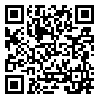Volume 29, Issue 4 (7-2022)
RJMS 2022, 29(4): 233-242 |
Back to browse issues page
Research code: 0
Ethics code: 0
Clinical trials code: 0
Download citation:
BibTeX | RIS | EndNote | Medlars | ProCite | Reference Manager | RefWorks
Send citation to:



BibTeX | RIS | EndNote | Medlars | ProCite | Reference Manager | RefWorks
Send citation to:
Ansari R, Dini S, Afradi A, Nejati R, Sepehri P, Ranjbar R. The Effectiveness of Schema Therapy and Mindfulness on Defense Mechanisms and Cognitive Emotion Regulation in Individuals with Internet Addiction. RJMS 2022; 29 (4) :233-242
URL: http://rjms.iums.ac.ir/article-1-9017-en.html
URL: http://rjms.iums.ac.ir/article-1-9017-en.html
Ph.D. Candidate in Psychology, Department of Psychology, Persian Gulf University, Bushehr, Iran. (Corresponding Author) , solmadan@yahoo.com
Abstract: (1103 Views)
| Background & Aims: Internet addiction is a type of obsessive-compulsive disorder that has some characteristics similar to pathological conditions. In fact, a person can be said to have an Internet addiction when they have symptoms of premature fatigue, loneliness, depression, and similar problems. Schema therapy is based on schemas, which are systematic elements of past reactions and experiences that can guide subsequent perceptions and evaluations. Schema therapy was created by Young to treat personality disorders and other personal and interpersonal problems, and its effectiveness has been confirmed. This therapy combines elements from the schema, Gestalt, psychoanalysis, object relations, attachment, and structuralism schools of psychoanalysis in the form of a therapeutic model. Using schema therapy increases feelings of worth, competence, competence, positivity, and self-confidence. Mindfulness is a meditative therapy that combines mindfulness meditation and psychological exercises. It includes a set of techniques and methods that allow a person to face events that occur here and now without judgment, consciously, and without evaluation. In this type of therapy, people learn to simply observe their mental processes, feelings, thoughts, and bodily sensations, which may result in negative emotions (such as fear and anxiety, catastrophic thoughts, and rumination about the future) and negative bodily sensations (such as pain from chronic diseases). Thus, it can be seen that treatment protocols are mainly of a combined type and usually use two approaches simultaneously. Cognitive emotion regulation involves internal and external processes responsible for monitoring, evaluating, and modifying emotional responses, particularly their intensity and duration, in order to achieve goals. This concept refers to the process by which emotional experience is modified, evaluated, revised, and maintained. Integrating mindfulness with various therapeutic approaches has attracted the attention of therapists in recent decades, such that behavioral therapy is considered to have three waves: the first wave includes classical behavioral therapy, the second wave combines behavioral therapy with cognition, and the third wave combines behavioral therapy with mindfulness. Internet addiction, as an increasing issue in modern societies, can have detrimental effects on individuals' mental health and emotional regulation. This study aimed to examine the effectiveness of schema therapy and mindfulness on defense mechanisms and cognitive emotion regulation in individuals addicted to the internet. Methods: The research method was semi-experimental with a pre-test-post-test design and a control group. The statistical population included individuals with internet addiction in Tehran, from which 30 participants were selected through convenience sampling and randomly assigned to two experimental groups and one control group. The experimental groups underwent 8 sessions of 90 minutes each, receiving either schema therapy or mindfulness intervention, while the control group received no intervention. Results: Mindfulness can also help reduce Internet addiction because the individual learns to consciously and effectively deal with negative emotions rather than resorting to the virtual world to escape them. Taken together, schema therapy and mindfulness approaches can effectively help reduce maladaptive defense mechanisms and improve cognitive and emotional regulation in Internet addicts. While schema therapy specifically focuses on identifying and changing negative and dysfunctional schemas, mindfulness helps individuals deal with their emotions more healthily by being aware of the present moment and accepting their thoughts and feelings. Schema therapy aims to identify and modify negative and dysfunctional schemas that were formed in childhood, helping individuals break free from these maladaptive defense mechanisms. This therapy emphasizes changing a person's negative thoughts, feelings, and behaviors, enabling individuals to use more effective and adaptive emotion regulation strategies instead of involuntary and maladaptive defense mechanisms. For example, in schema therapy, the individual learns to pay attention to their problems instead of denying them and finding ways to manage their emotions. Therefore, schema therapy can reduce maladaptive defense mechanisms and improve individuals' cognitive and emotional regulation. The findings revealed that both intervention methods led to improvements in defense mechanisms and cognitive emotion regulation, with schema therapy showing a greater impact on these variables. Conclusion: By reducing the use of maladaptive defense mechanisms and enhancing cognitive-emotional regulation, these treatments can help individuals effectively cope with their psychological and emotional problems and reduce Internet addiction. Therefore, using these approaches as complementary treatments can significantly help improve the mental and psychological health of Internet addicts. The results indicate that schema therapy, by modifying maladaptive core patterns, can reduce immature defense strategies and improve cognitive emotion regulation. Therefore, it is suggested that this method be included in the treatment programs for individuals with internet addiction. |
Keywords: Internet Addiction, Schema Therapy, Mindfulness, Defense Mechanisms, Cognitive Emotion Regulation
Type of Study: Research |
Subject:
Clinical Psychiatry
Send email to the article author






